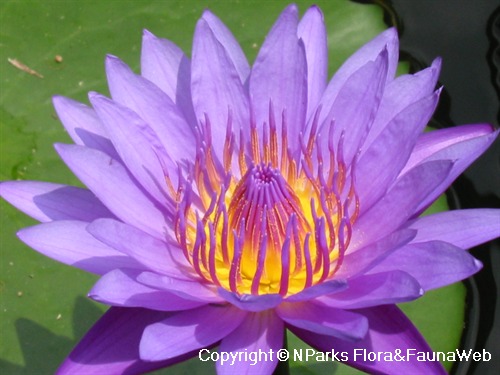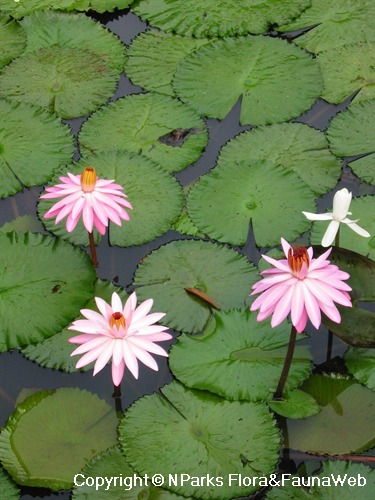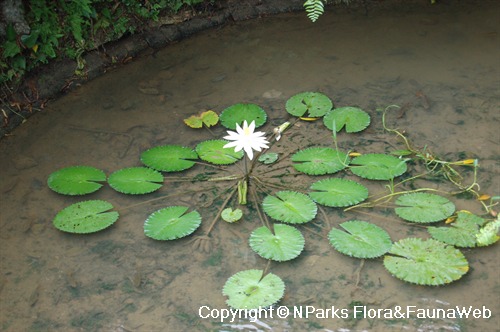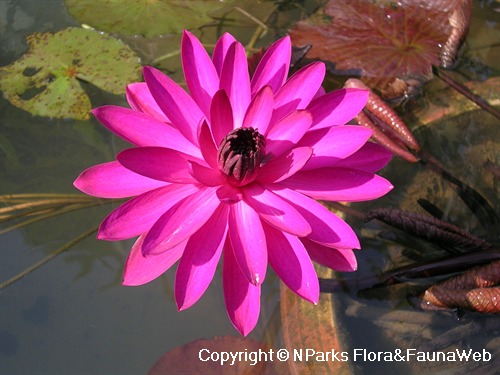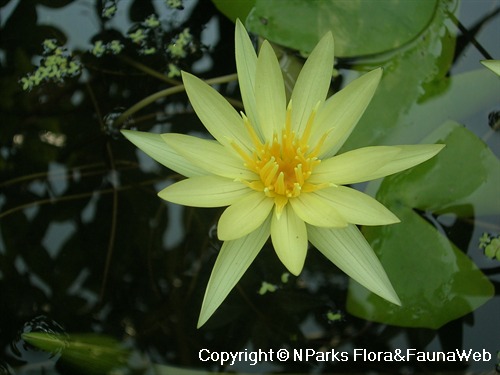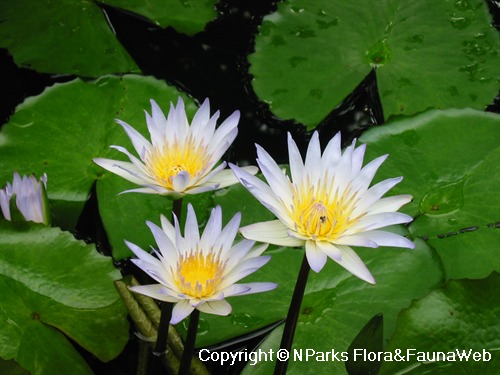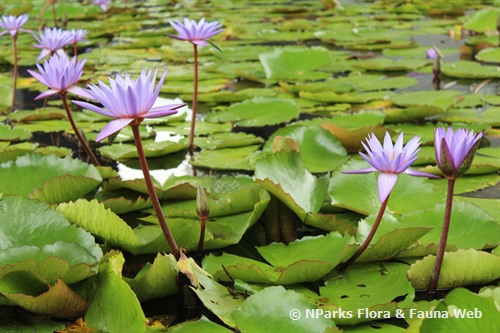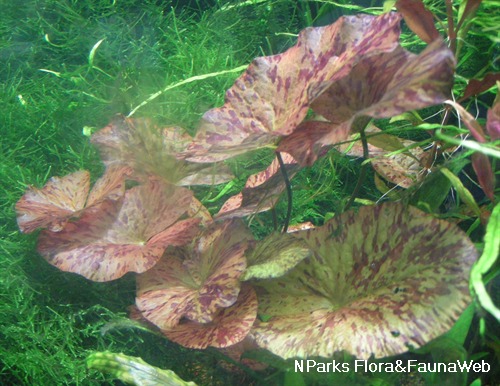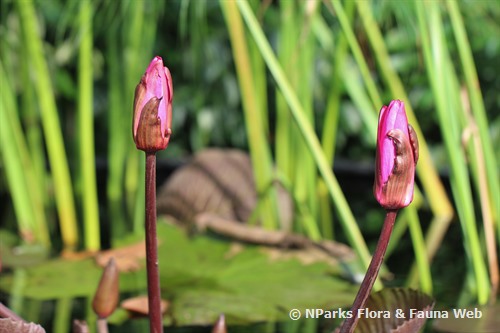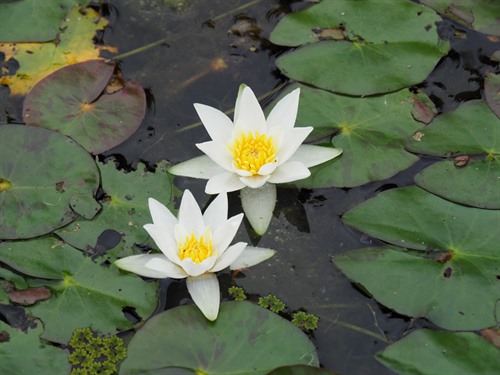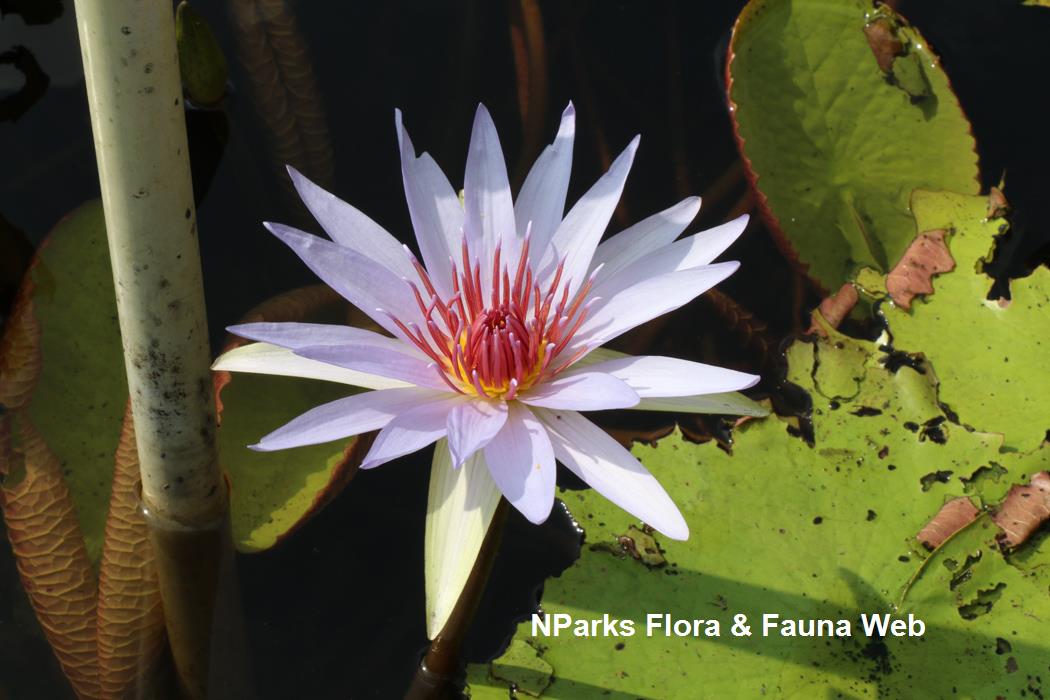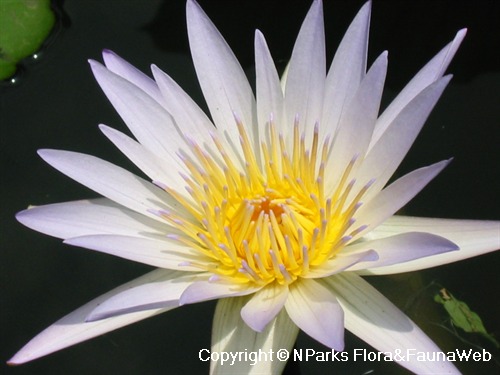
Name
Classifications and Characteristics
| Plant Division | Angiosperms (Flowering Seed Plants) (Dicotyledon) |
|---|---|
| Plant Growth Form | Aquatic & Hydrophyte (Floating Aquatic) |
| Lifespan (in Singapore) | Perennial |
| Mode of Nutrition | Autotrophic |
Biogeography
| Native Habitat | Aquatic (Freshwater Pond / Lake / River) |
|---|---|
| Preferred Climate Zone | Tropical |
Description and Ethnobotany
| Growth Form | Aquatic plant with floating leaves. |
|---|---|
| Foliage | Thick, waxy, circular leaves float on the surface of the water. Each leaf typically has a single notch that extends from the edge to the centre. |
| Stems | It produces horizontal stems buried in the mud known as a rhizomes. The leaves and flowers are directly attached to the rhizome by a long stalk. |
| Flowers | The cup-shaped flower opens and closes daily over a span of 3 to 4 days. On the first day, the female part of the flower is mature and receptive to pollination, while the male parts remain immature. Subsequently, the female part stops being receptive to pollination, as the male parts mature to produce pollen. The female and male parts maturing at separate times helps to prevent self-pollination. Once a flower is pollinated, it is pulled underwater to develop into fruit. |
| Fruit | The fruit is round to oval and covered in leaf-like appendages, resembling a green dragonfruit. |
| Similar | Water Lilies (Nymphaea cv.) look similar to Lotus (Nelumbo nucifera). Water Lily leaves are notched and float on the water, while Lotus leaves form complete circles and are held above the water. |
| Associated Fauna | Water lilies are often pollinated by beetles. The flower produces an attractive liquid that pollinators may fall in, washing the pollen on their bodies into the liquid where it can fertilise the female part. In some cases, the pollinator may be trapped when the flower closes and released the next day when the flower re-opens. Ideally, the pollen produced on the second and third day will become attached to the pollinator's body, resulting in further pollination of other flowers. |
| Taxonomy | There are tropical and hardy water lilies; the latter are adapted to temperate climates. Tropical water lilies have toothed leaf margins, while hardy water lilies have smooth leaf margins. There are about 40 species of water lilies that have been extensively bred and interbred to produce cultivars with foliage and flowers of various colours. |
| Cultivation | Water Lily grows best in stil or slow-moving, clear water. |
| Ethnobotanical Uses | Edible Plant Parts : Edible Seeds Others: The seeds are eaten raw or cooked and have a peppery flavour. They are sometimes dried, ground and mixed with flour to make noodles, porridge, bread and other baked items. |
Landscaping Features
| Desirable Plant Features | Ornamental Flowers |
|---|---|
| Landscape Uses | Parks & Gardens, Pond / Lake / River, Container Planting |
| Thematic Landscaping | Water Garden |
Plant Care and Propagation
| Light Preference | Full Sun |
|---|---|
| Water Preference | Lots of Water |
| Plant Growth Rate | Fast to Moderate |
| Rootzone Tolerance | Easy to Grow |
| Propagation Method | Seed, Storage Organ (Rhizome), Division |
Foliar
| Foliage Retention | Evergreen |
|---|---|
| Mature Foliage Colour(s) | Green |
| Mature Foliage Texture(s) | Leathery, Powdery / Waxy Bloom, Thick, Smooth |
| Foliar Type | Simple / Unifoliate |
| Foliar Arrangement Along Stem | Basal |
| Foliar Attachment to Stem | Petiolate |
| Foliar Shape(s) | Non-Palm Foliage (Orbicular / Round) |
| Foliar Venation | Palmate |
| Foliar Apex - Tip | Rounded |
Floral (Angiosperm)
| Flower Colour(s) | Red, Pink, White, Purple |
|---|---|
| Flower Grouping | Solitary |
Image Repository
Others
| Master ID | 977 |
|---|---|
| Species ID | 2271 |
| Flora Disclaimer | The information in this website has been compiled from reliable sources, such as reference works on medicinal plants. It is not a substitute for medical advice or treatment and NParks does not purport to provide any medical advice. Readers should always consult his/her physician before using or consuming a plant for medicinal purposes. |

